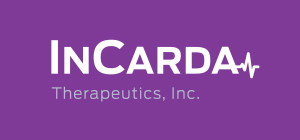
Publications
Optimizing flecainide plasma concentration profile for atrial fibrillation conversion while minimizing adverse ventricular effects by rapid, lowdose intratracheal or intravenous administration
A.A. Marum, et al. | International Journal of Cardiology 2018
We investigated whether rapid administration of a low dose of flecainide, either intratracheally or intravenously (IV), could accelerate conversion of atrial fibrillation (AF) while reducing adverse ventricular effects. Methods: Flecainide was delivered via intratracheal administration at 1.5mg/kg bolus and compared to IV infusion at 1.0mg/kg over 2min (lower-dose, rapid) and 2.0mg/kg over 10 min (ESC guideline) in closed-chest, anesthetized Yorkshire pigs. Catheters were fluoroscopically positioned in right atrium to measure atrial depolarization (Pa) duration and left ventricle (LV) to measure QRS complex duration and contractility (LV dP/dt) during atrial pacing at 140 beats/min. Flecainide was delivered intratracheally via a catheter positioned at the bifurcation of the main bronchi. AF was induced by intrapericardial administration of acetylcholine followed by burst pacing.
Rapid conversion of atrial fibrillation with pulmonary delivery of flecainide in large animal models.
Verrier | J Cardiovascular Electrophysiology 2018, In Press
Pulmonary delivery of the class IC antiarrhythmic agent flecainide exerts a predominant effect on atrial compared to ventricular depolarization duration revealed by intracardiac recordings.
De Antonio | J Cardiovasc Electrophysiol. 2018;1‐7.
Targeting atrial depolarization (Pa) duration with pulmonary delivery of flecainide for rapid AF conversion.
Verrier | European Heart Journal, Volume 39, Issue suppl_1, 1 August 2018, ehy566.P5708
Comparative Pharmacokinetic and Electrocardiographic Effects of Intratracheal and Intravenous Administration of Flecainide in Anesthetized Pigs
Stocco | Journal of Cardiovascular Pharmacology 2018
Hysteresis between pharmacokinetics and changes in QRS complex duration following flecainide administered via oral inhalation or IV infusion
Madhavappedi | European Society Cardiology 2018
Hand-held breath-actuated nebulizer for delivery of flecainide to the heart: Dose-concentration dependent pharmacokinetics and QRS interval prolongation of the inhaled flecainide in healthy volunteers.
Belardinelli | Circulation 2017; 136:A16836
Oral and IV routes for delivery of flecainide (FLEC) for acute cardioversion of atrial fibrillation (AF) have drawbacks: high doses (150-300 mg) and 2- to 4- hours wait time for cardioversion with oral dosing and hospitalization for IV administration. Studies in large animal models of AF suggest that FLEC administered via inhalation (IH) may convert AF rapidly at relatively low doses. Thus, FLEC-IH could be effective at low doses and shorten the time to cardioversion to minutes without requiring emergency room visits.
A novel approach to deliver flecainide to the heart: A study in healthy volunteers to compare the cardiovascular effects of inhaled vs intravenous flecainide
Belardinelli | Circulation 2017; 136:A16888
Flecainide (FLEC) is effective for cardioversion of recentonset atrial fibrillation (AF). In dogs and pigs intratracheal instillation of FLEC is effective in terminating episodes of AF within minutes. The present study is part of a drug development program to use inhaled (IH) of FLEC to cardiovert paroxysmal AF. In this open-labeled 2-period crossover study, we compared the effects of FLEC administered via IV and oral IH on QRS, and PR interval duration, heart rate (HR), blood pressure (BP), and FLEC plasma levels.

